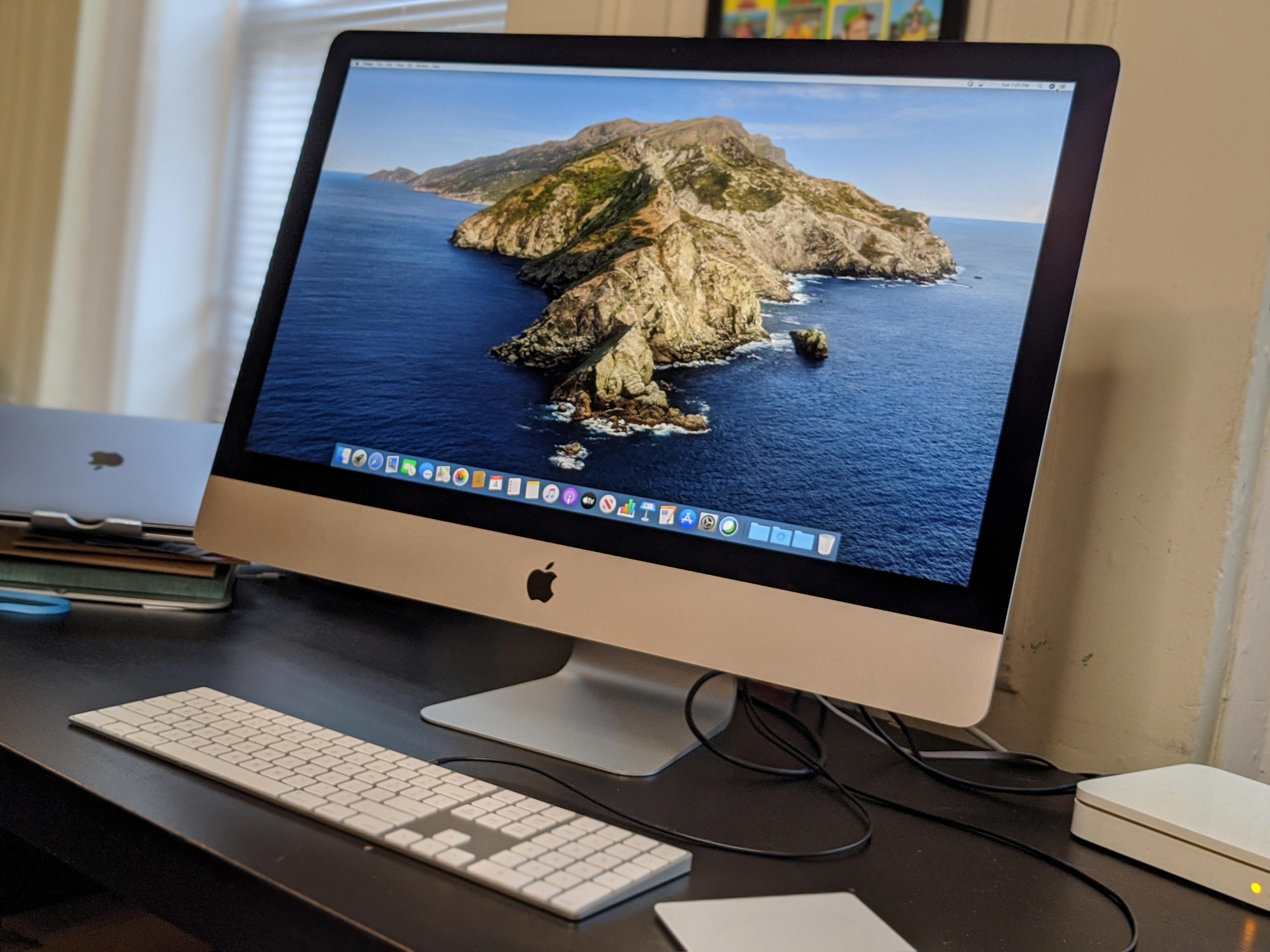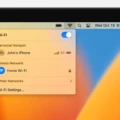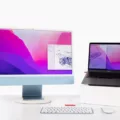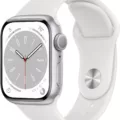The iMac Target Display Mode is the perfect way to use your iMac for a dual-screen experience. With this feature, you can use your iMac as a second display for a Mac notebook, or even another iMac. This opens up a range of possibilities when it comes to multitasking and getting the most out of your workspace.
Here’s how it works: First, connect the two computers with a Thunderbolt cable (which is included with newer models). Then, on the computer that will be used as the “target display” (usually an iMac), hold down Command+F2 on its keyboard. This will enable Target Display Mode and turn off its built-in display wile allowing you to use it as an external monitor.
Once enabled, you can control both screens from either computer — move windows betwen them with ease and even adjust settings like brightness and color profile. You can also use one screen as your main workspace while keeping the second one available for other tasks such as streaming videos or checking email.
With Target Display Mode, you can make better use of your Mac setup and increase productivity. It’s perfect for thoe who need extra space to work in multiple applications at once, or just want more control over their desktop environment.
If you’re looking for an easy way to add another display to your setup without having to purchase additional hardware, then Target Display Mode is definitely worth considering!
Does My IMac Support Target Display Mode?
Yes, your iMac can support Target Display Mode if it is a model that was introduced in 2011, 2012, 2013, or mid 2014 and has macOS High Sierra or earlier installed. You will also need to have another Mac that was introduced in 2019 or earlier and has macOS Catalina or earlier installed. To enable Target Display Mode on your iMac, you must connect the two computers with a Thunderbolt cable and press Command + F2 on the keyboard for the connected Mac. Once this is done, your iMac will become an external display for the connected Mac.
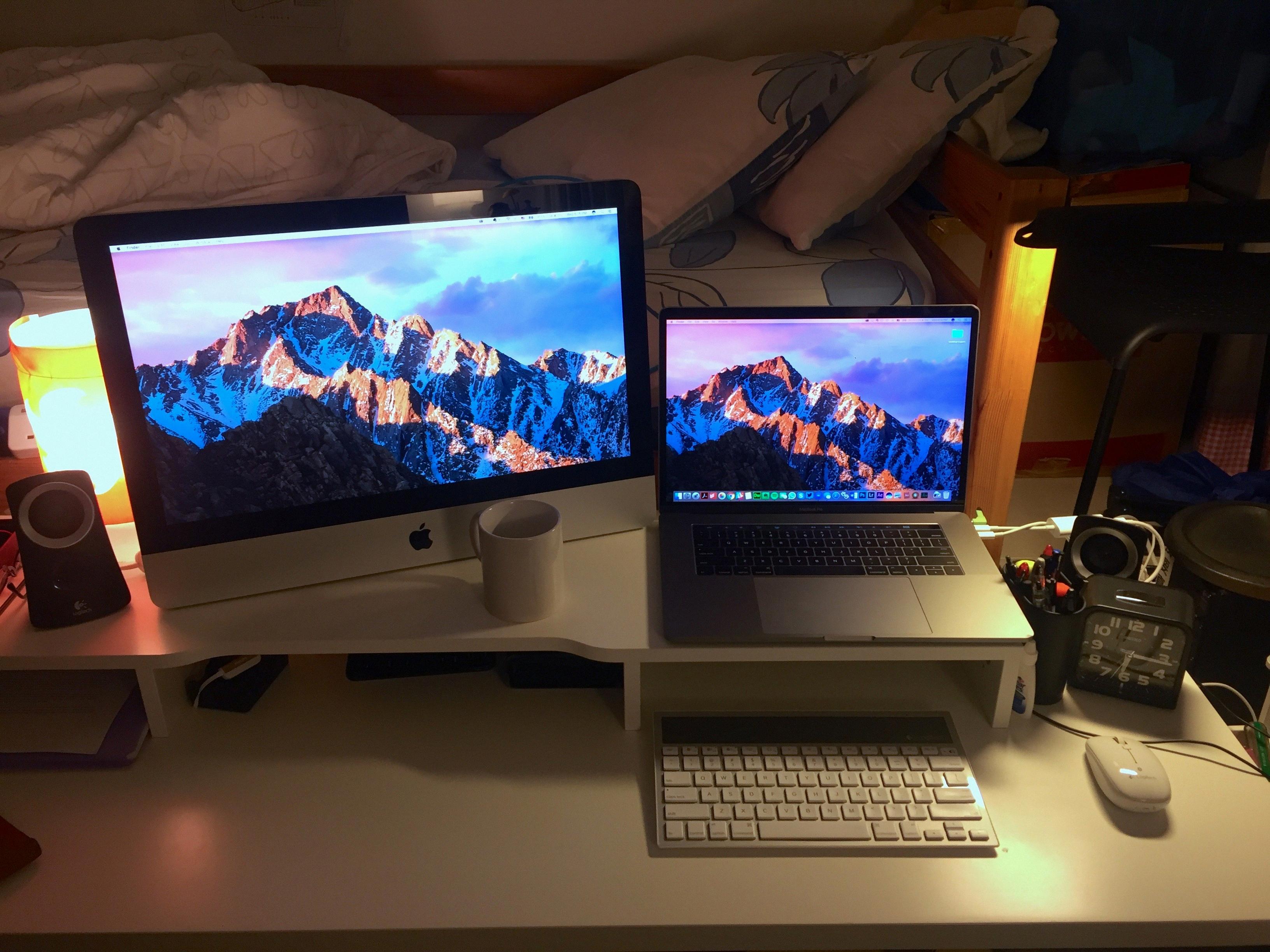
Source: forums.macrumors.com
Using an iMac as a Target Screen
Using your iMac as a target screen is quite simple. First, you’ll need to connect your Macs together with a Thunderbolt cable, one end into the ThunderBolt port on the iMac, and the other end into the Thunderbolt port of the other Mac. Once this is done, press Command-F2 on the keyboard of the iMac. You shold now be able to see the desktop of the other Mac on your iMac’s display. To exit Target Display Mode, simply press Command-F2 again.
Using an Old iMac as a Monitor
Yes, you can use your old iMac as a monitor. Depending on the model of your iMac, you will need to make sure that your computer has the same cable connections as outlined in the earlier section on iMac cables. For models from 2009 and 2010, you will need to use Mini Display Port. For iMacs from 2011 to mid-2014, you will need to use Thunderbolt or Thunderbolt 2. Once thse connections are established, you should be able to use your old iMac as a monitor for your PC.
Does the iMac 2011 Support Target Display Mode?
Yes, iMac 2011 models with Thunderbolt connection support Target Display Mode. This allos you to use the iMac as a display for another Mac or other device that has a Thunderbolt connection. To use Target Display Mode, connect the other Mac or device to the iMac’s Thunderbolt port and press Command-F2 on the connected Mac’s keyboard. The iMac will then become an external display for the other Mac and you can adjust settings like resolution and brightness from the connected Mac’s System Preferences.
Using a 2015 iMac as a Monitor
Unfortunately, no. The Late 2015 iMac model cnnot be used as a monitor. This is because the late 2015 iMac does not have the necessary video output ports required to use it as an external display. Additionally, no late-model Mac can use a qualifying iMac as an external display.

Source: astropad.com
Removal of Target Display Mode from Macs
Apple removed Target Display Mode from Macs due to its reliance on Thunderbolt ports. With the introduction of USB-C, Apple had to make a difficult decision; either keep Target Display Mode but require more expensive and power-hungry Thunderbolt ports, or shift to USB-C and remove the feature. Apple chose the latter, as it allowed them to slim down thir port selection, reduce costs and offer more portable devices. Unfortunately, this meant that Target Display Mode was no longer available on Macs.
Using a 24 Inch iMac as a Monitor
The answer to this question depends on the model of iMac you have. For iMacs manufactured before 2014, tere was a built-in feature called Target Display Mode that allowed users to use their iMac as an external monitor. However, this feature has since been discontinued in more recent models. Unfortunately, it is unlikely that any future Macs will support this feature again. If you have an older 24-inch iMac and wish to use it as a monitor, you may be able to do so by enabling Target Display Mode.
Using a 2009 iMac as a Monitor
Yes, you can use your 2009 iMac as a monitor! To do this, you’ll need to enable Target Display Mode (TDM) on the iMac. This is a feature that was introduced in OSX 10.7 and lter operating systems, so if your iMac is running an older OSX version than this, it won’t be possible.
To set up TDM, first make sure that both the display and the source computer are powered on. Then press Command + F2 (or Option + Apple + F2 if using a wireless keyboard) on the keyboard connected to the iMac while it’s displaying its own desktop. This will enable Target Display Mode and should cause the source computer’s desktop to appear on the iMac’s screen.
Be aware that in order for TDM to work, both computers must be connected to each othr via either a Thunderbolt or Mini DisplayPort cable. If you don’t have one of these cables handy, you may need to purchase one before attempting to use your 2009 iMac as a monitor.
Once TDM has been enabled, you can switch between using the iMac as a regular desktop and using it as a monitor for another computer by pressing Command + F2 again. And when you’re done using your 2009 iMac as a monitor, just press Command + F2 once more to disable TDM and return control of the display back to the iMac itself.
Using a 2008 iMac as a Monitor
Yes, you can use your 2008 iMac as a monitor with the help of a few extra pieces of hardware. You will need a Thunderbolt or Mini DisplayPort cable to connect the two computers, and an adapter to convert the video signal from your MacBook to the iMac’s display port. Once you have all of the necessary hardware, you can enable Target Display Mode on your iMac by pressing Command + F2. This will caue your iMac to act as an external monitor for your MacBook.
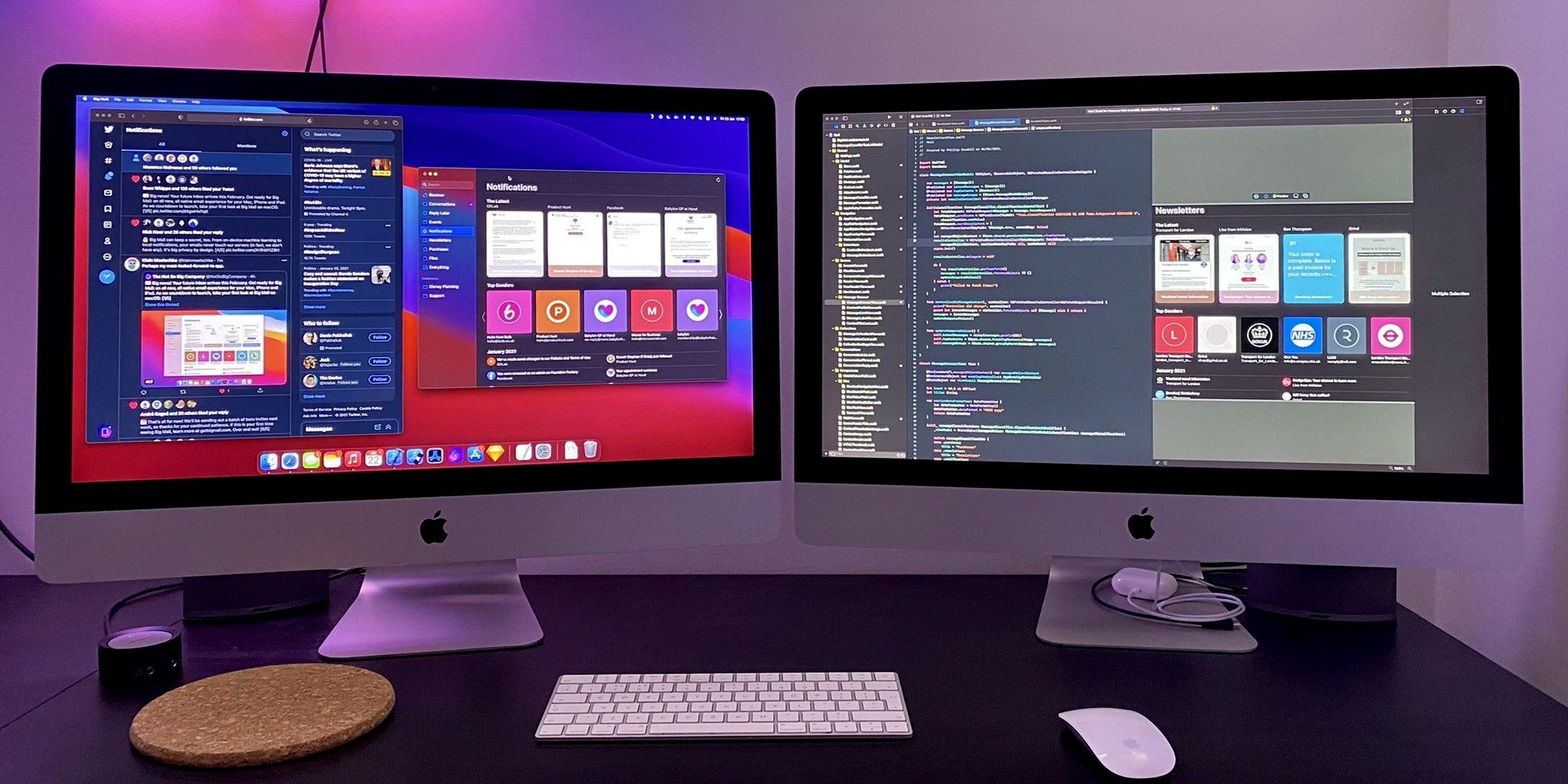
Source: 9to5mac.com
Can an iMac Accept HDMI Input?
Yes, iMacs can accept HDMI input. To do so, you will need an HDMI cable or adapter that is compatible with your iMac. Once connected, you will be able to display the content of your iMac on the connected device. Depending on your model of iMac and the HDMI device you are connecting to, you may also have audio support and be able to control your iMac with the connected device’s remote control.
Using an iMac 2011 as a Monitor for a PC
To use your iMac 2011 as a monitor for your PC, you’ll need to firt make sure that both the iMac and PC are powered on. Then, hold down Cmd + F2 or Cmd + Fn + F2 on the iMac keyboard to activate Target Display Mode. This will trigger the iMac to mirror the screen of your PC, allowing you to use it as an external monitor. Depending on your computer’s configuration, you may also need to configure additional settings in order for Target Display Mode to work properly. Once everything is set up, you should be able to use your iMac 2011 as a monitor for your PC.
Using a 2012 iMac as a Monitor for a PC
To use your 2012 iMac as a monitor for your PC, you’ll need to follow thee steps. First, turn off both the iMac and PC. Then, plug one end of a Thunderbolt or Mini DisplayPort cable into the port on the back of your iMac. Next, connect the other end of the cable to the Thunderbolt or Display port on your PC. If your PC doesn’t have either type of port, you can also use an adapter with an HDMI cable to connect them. Finally, turn on both devices and configure any necessary display settings on your PC. Once that’s done, you should be able to use your iMac as a monitor for your PC!
Using an iMac from 2011 as a Monitor for a Mac Mini
Yes, you can use your 2011 iMac as a monitor for the Mac mini. The iMac supports Target Display Mode, which allows it to be used as an external display for another Mac. To enable this feature, connect the two computers using a Mini DisplayPort or Thunderbolt cable and press Command+F2 on your iMac’s keyboard. Once enabled, your iMac will show the same content as your Mac mini. Please note that all Macs built after 2019 do not support this feature, so it will not work with the 2020 Mac Mini.
Using a 2015 iMac as a Monitor for a Mac Mini
No, unfortuntely you cannot use a Late 2015 iMac as a monitor for a Mac mini. The Late 2015 iMac does not support being used as an external display for another Mac. To use an iMac as an external display, it must be at least a Mid 2017 model with macOS High Sierra 10.13.4 or later installed. Additionally, the Mac mini must also have macOS High Sierra 10.13.4 or later installed in order to use Target Display Mode (TDM).
Using an iMac 27 as a Monitor
Yes, you can use the 27-inch iMac as a monitor if it is one of the iMacs that was made between late 2009 and 2013. To use it as a monitor, you need to connect your Mac mini or another Mac to it via a Mini DisplayPort or Thunderbolt cable. Once connected, you can enter Target Display Mode on the iMac by pressing Command-F2 on its keyboard. This will allow you to use the 27-inch iMac as an external display for your other Mac.
Does M1 Support Target Display Mode?
No, unfortunatey M1 Macs do not support Target Display Mode. This feature was discontinued with the introduction of the new M1 chip and will not work on any M1 Mac. Your best bet is to get an external monitor that can connect to your M1 Mac and use it as an additional display.
Using a Late 2013 iMac as a Monitor
Yes, you can use your late 2013 iMac as a monitor. To do this, you will need a Thunderbolt 2 cable to connect the iMac to anoher device (such as a laptop or gaming console). You will also need a keyboard and/or mouse for the iMac in order to enter the Command + F2 key combination so that it can be put into Target Display Mode. Once in Target Display Mode, the iMac will act as an external monitor for your other device.

Source: support.apple.com
Using an Old iMac as a Monitor for Mac Studio
No, unfortunately you cannot use an old iMac as a monitor for a Mac Studio. Apple removed the Target Display Mode feature from their Retina displays (which includes iMacs) in 2014, which allowed other Macs to use the display as a secondary screen. More recent models of the iMac support AirPlay to Mac, however this feature requires an iMac released in 2019 or later.
Can an iMac Be Used for Gaming?
Yes, an iMac can be used for gaming. The newest iMac models are equipped with powerful processors and graphics cards that can handle most modern gaming titles. For example, the high-end 27-inch iMac comes with a Radeon Pro 5500 XT GPU that delivers up to 8 teraflops of performance for demanding games. You may need to make some adjustments to your settings if you’re playing particularly graphics heavy games, but in general you should be able to enjoy a great gaming experience on your iMac.
Does Target Display Mode Work With macOS Big Sur?
Unfortunately, no, Target Display Mode is not compatible with macOS Big Sur. This is becase Target Display Mode requires the use of two Macs, one as an output device and one as a target display, and the output Mac must be running a version of macOS prior to Big Sur (e.g. Catalina). Additionally, both Macs must be from the same model year or earlier – this means that any Macs made in 2019 or later are not supported by Target Display Mode. We apologize for any inconvenience this may cause.
What to Do With an Old iMac (2009)
You can do a lot with an old iMac from 2009. First, you can install a new operating system, such as Linux, onto your machine to give it a fresh start and improved performance. You can also use the extra storage space to store photos, music, and other documents. Additionally, you could turn your old iMac into a media center by connecting it to your TV for streaming content. This can be done through an HDMI cable or AirPlay connection. You could also use the iMac as a web server where you can host websites or applications. Lastly, if none of tese options appeal to you, you could always sell or recycle your old iMac to help reduce electronic waste.
Troubleshooting Issues with Target Display Mode
Target Display Mode is not working because it requires compatible devices and cable. Your iMac or MacBook may not support Target Display Mode, or the cable you are usng is incorrect or defective. Additionally, your iMac must be logged into a user account for Target Display Mode to work properly and your iMac cannot be currently starting up on Windows. If any of these conditions are not met, then Target Display Mode will not function correctly.
Using a 2011 iMac as an External Monitor
Yes, a 2011 iMac can be used as an external monitor. You will need to connect the Mini DisplayPort or Thunderbolt port on the back of your iMac to the oter Mac’s video-out port (Thunderbolt, Mini DisplayPort, HDMI, DVI, or VGA). Once connected, you can use the Display System Preferences to configure your display settings. Keep in mind that some older iMac models may not support resolutions higher than 1920 x 1200.
Can a 2007 iMac Be Upgraded?
Yes, it is possible to upgrade your 2007 iMac. The highest version of macOS that your iMac can run is 10.11.6 El Capitan. To upgrade, you’ll need to back up any important files and then download the macOS installer from the App Store on your iMac. Once the download is complete, follow the on-screen instructions to install the new version of macOS on your iMac. After installation is complete, you’ll be able to enjoy the latest features and benefits of the new software.
Troubleshooting Mac Display Detection Issues
There could be seeral reasons why your Mac is not detecting displays. Firstly, check that the display cable connections are secure and that the correct cables are being used. Additionally, you should check the resolution and brightness settings in System Preferences > Displays. If these settings are incorrect, your Mac may not be able to detect or recognize the display. You can also try holding down the Option key while clicking Scaled in System Preferences > Displays to show and select the Detect Displays button. If you have an additional adapter such as a USB-C adapter, make sure it has been updated with the most recent software. If none of these steps work, you may need to contact Apple support for further assistance.
Using an iMac as a Monitor for a Dell Laptop
No, unfortunately you cannot use an iMac as a monitor for a Dell laptop. The two systems are not compatible with each other and require different connections and software. If you want to connect the Dell laptop to an external monitor, you can do so by connecting it directly to a Dell monitor.
Conclusion
IMac Target Display Mode allows you to use your iMac as a display for another Mac by connecting the two devices with either a Mini DisplayPort or Thunderbolt cable. This feature is especally useful for those who need multiple displays, but don’t have the space or budget for an extra monitor. When in Target Display Mode, the iMac acts as the main display and can be used to view documents, videos, photos, games, and more. The iMac also acts as a sound source for the other Mac, allowing you to enjoy audio from both machines at once. While this feature is convenient and easy to set up, it does limit some features of your iMac such as its ability to run apps or access the internet. Overall, iMac Target Display Mode is a great option for those needing an additional display without taking up extra space or spending money on another monitor.

